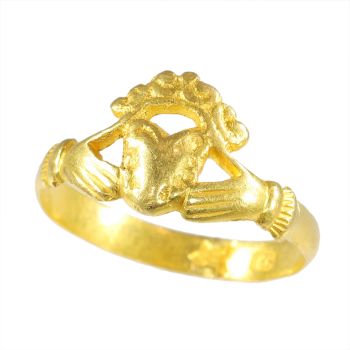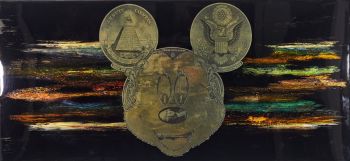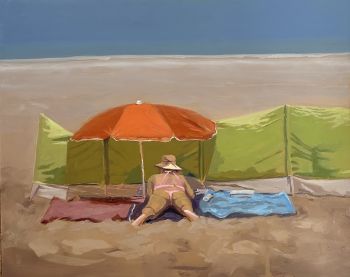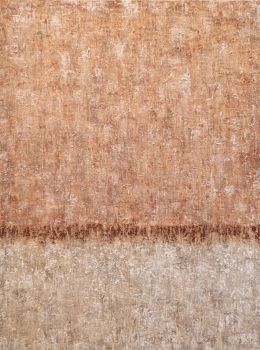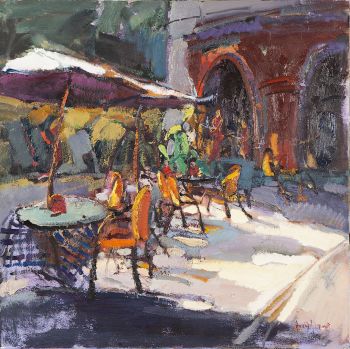‘Allegories of Africa and America’ 1872
Eduard Charlemont
CanvasOlieverfVerf
153 ⨯ 153 cm
Prijs op aanvraag
Zebregs & Röell - Fine Art - Antiques
- Over kunstwerkAllegory of Africa, signed and dated Ed. Charlemont 1872 lower left
Oil on canvas, H. 153 x W. 153 cm (each tondo)
Eduard Charlemont (1848, Vienna) was a distinguished painter. He was born in an artistic family. His father Matthias Adolf Charlemont (1820-1871) was a well-known miniature painter, his brother Hugo Charlemont (1850-1939) an impressionist landscape painter and brother Theodor Charlemont (1859-1938) a sculptor. Eduard Charlemont made name for himself only at the age of fifteen when he exhibited his works for the first time at the Academy of Fine Arts in Vienna, where he also studied. He exhibited for the first time at the Paris Salon in 1878, where he won his first prize. Charlemont was called into Hans Makarts (1840-1884) studio, who by that time was a leading figure in the artworld of Vienna and an artist luminary of the Vienna Ringstrasse era.
Charlemont developed a new and unique style based on the ‘Neo-Baroque’ style of Makart, a crossing from 16th century Venetian paintings and French Rococo painters from the 18th century. His penchant for idyllic, playful compositions, characterized by elegance, showed up as a recurring constant in the artist’s oeuvre. This style is also expressed in the tondi presented here.
The first work shows the decorative allegory of the continent Africa with its respective flora and fauna. The central female figure is arranged in an illusionistic, dreamy ideal space that functions as a projection surface for the Western fantasies that were prevalent at that time. It is a symbolic representation.
The second work, the ‘Allegory of America' stands as a testament to his enduring fascination with cultures beyond the boundaries of Europe. Within this canvas, Charlemont skillfully captures a tableau of individuals and scenes that serve as representatives of various facets of American culture. The composition is rich with symbolism, including the presence of an indigenous figure adorned with a resplendent headdress, a nod to the diverse native cultures of the Americas. Colonial influences are also discernible, as evidenced by the woman's fan, evoking echoes of European presence. Exotic flora and avian motifs further underscore the allegorical portrayal, serving as emblems of the Americas' unique biodiversity.
These works demonstrate the romantic lens through which Europeans regarded people from the colonies. They also demonstrate his adeptness in weaving together various cultural elements into a cohesive narrative. The meticulous attention to detail and the nuanced interplay of light and color are characteristic of Charlemont's signature style, allowing viewers to immerse themselves in a representation of a different culture. The fascination with his two depictions of America and Africa lasted not only during the artist's lifetime, but also to this day. The tondi remained in the collection of the composer, impresario, and art connoisseur Andrew Lloyd Webber (born in 1948 London) until the 1990s. A similar work, but an allegory on Asia, caused a battle between bidders in a French auction in 2021, resulting in a record price for paintings by Charlemont.
Provenance:
Collection Andrew Lloyd-Webber, United Kingdom
Auction, Sotheby’s Billinghurst, 15 september 1999, lot 775
Private collection, Switzerland - Over kunstenaar
Eduard Charlemont werd in 1848 geboren in Wenen, de hoofdstad van het Oostenrijkse rijk. Zijn vader, Matthias Adolf Charlemont, was ook een schilder, gespecialiseerd in het schilderen van miniatuurportretten.
Zijn jongere broer Hugo Charlemont (1850–1939) was een even beroemde impressionistische schilder. Op vijftienjarige leeftijd exposeerde Charlemont zijn werken voor het eerst aan de Academie voor Schone Kunsten Wenen, waar hij beeldende kunst studeerde. Op dezelfde leeftijd werd Eduard Charlemont ook ingehuurd door een meisjesschool om tekenles te geven.
Na zijn afstuderen aan de Academie voor Schone Kunsten in Wenen reisde Charlemont naar vele landen in Midden-Europa en vestigde zich uiteindelijk in Parijs, waar hij de volgende dertig jaar woonde.
In Parijs won hij verschillende keren de eerste prijs van de Parijse Salon, een jaarlijkse tentoonstelling van de Franse Academie voor Schone Kunsten (Frans: Académie des Beaux-Arts).
Het bekendste werk van Charlemont is The Guardian of the Seraglio, algemeen bekend als The Moorish Chief, waarin een Moorse zwaardvechter een serail bewaakt (onderdeel van een typisch rijke Arabische villa, waar vrouwen verbleven als vreemden het huis binnenkwamen).
In 1899 won hij de gouden medaille op de Exposition Universelle, een Wereldtentoonstelling in Parijs. Charlemont stond ook bekend om zijn muurschilderingen. Hij schilderde drie van de muurschilderingen van het Burgtheater (het Oostenrijkse Nationale Theater in Wenen en een van de belangrijkste Duitstalige theaters ter wereld) met een totale lengte van ongeveer 55 meter.
Hij stierf in Wenen in 1906.
Bent u geïnteresseerd om dit kunstwerk te kopen?
Artwork details
Related artworks
Artista Desconhecido
A pair of angels Antwerp, 17th century, Carrara marble17th century
Preço em pedidoFrederik Muller
 Com curadoria de
Com curadoria deDanny Bree
1 - 4 / 24- 1 - 4 / 24
Artista Desconhecido
A large wall map of Asia by Nicolas de Fer 1647 - 1720
Preço em pedidoZebregs & Röell - Fine Art - Antiques
1 - 4 / 17- 1 - 4 / 24
Abraham Salm
Twenty-four chromolithographs of Java after A. Salm”1801 - 1876
Preço em pedidoZebregs & Röell - Fine Art - Antiques
Artista Desconhecido
An Amazon Indigenous Kayapo feather headdress1950 - 1960
Preço em pedidoZebregs & Röell - Fine Art - Antiques
1 - 4 / 12














